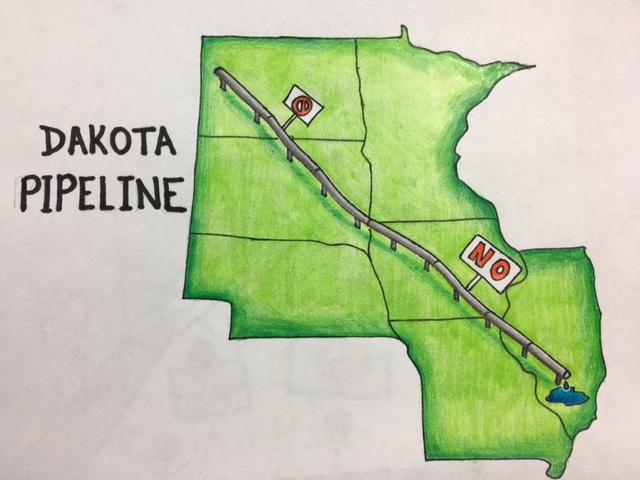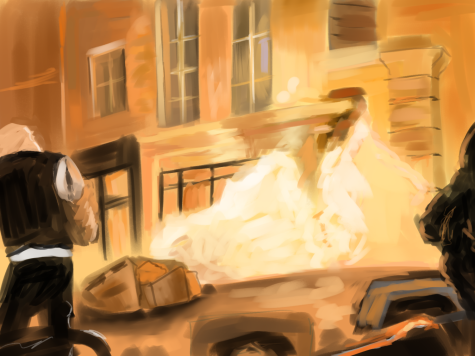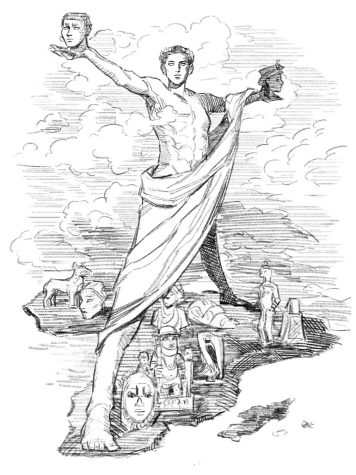Protesting the Pipeline
February 15, 2017
The Dakota Access Pipeline is a proposed $3.8 billion oil pipeline that would run through four states, Iowa, Illinois, South Dakota, and North Dakota. The Army Corps of Engineers approved the plan to build the pipeline in 2014, and Energy Transfer Partners—the company in charge of the pipeline—began construction without many obstacles…until it arrived in North Dakota.
In the original plan, the pipeline would run under parts of the Mississippi River, extremely close to the Standing Rock Sioux Tribe’s reservation. Since the Mississippi River is the source of drinking water for the Sioux natives, many were fearful that a potential oil leak could lead to sicknesses and fatalities within the reservation.
On April 1, 2016, the Sioux began protesting the construction, demanding that the government stop construction of the pipeline on their land. However, the pipeline construction continued. In August, the first violent protest erupted, with protesters setting construction equipment on fire. More violent demonstrations soon followed.
The Sioux were joined by many regular citizens and environmentalists who were also protesting the pipeline. Many were outraged not only by the environmental implications of such a huge pipeline, but also by the government’s lack of concern for the Native Americans.
The police responded to the violence with more violence, using tear gas and beanbag guns, which injured many protesters. Demonstrations continued to erupt all over the region, and many celebrities, as well as political figures such as Bernie Sanders, joined them. People began traveling from around the nation to North Dakota to join the Sioux in rallying against the pipeline.
Soon, people began to perceive the Dakota Access Pipeline as a fight for the environment and the people. After attempts at compromise, such as delaying the construction for peace talks or rerouting the pipeline, the federal government temporarily halted construction of the pipeline a few weeks ago, causing much cheer within the protesters’ camps.
Rohan Jinturkar ‘19 describes the situation, stating, “I think we should not ignore the protests at Standing Rock because they demonstrate the need to stand up for our rights and exercise our freedom of expression.” He voices a popular opinion, that the government suppresses free speech in suppressing these protests. The government has not listened to the people until very recently, causing an uproar.
However, the construction of the pipeline has not been stopped forever, and Energy Transfer Partners says that construction will resume soon. With the election of President Trump, who has said that he wants the pipeline built, it seems that the protesters will have many more challenges ahead. In fact, President Trump has already signed an executive order that gives a green light for the pipeline to continue. For now, it seems that the pipeline has won, but with all the dissent and outrage, the future is very unclear.



